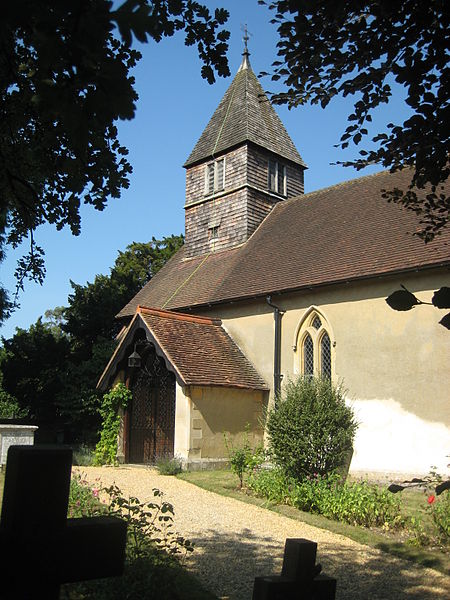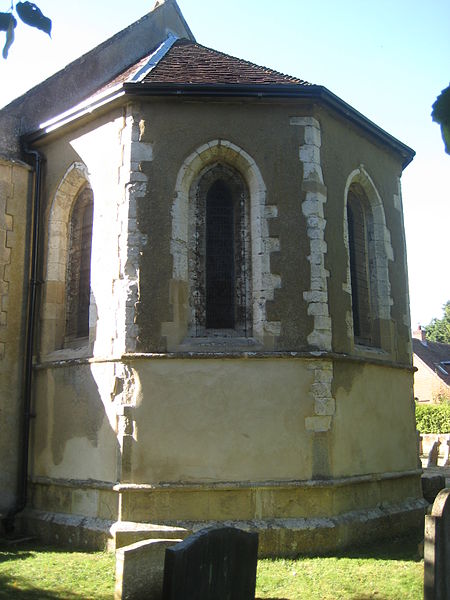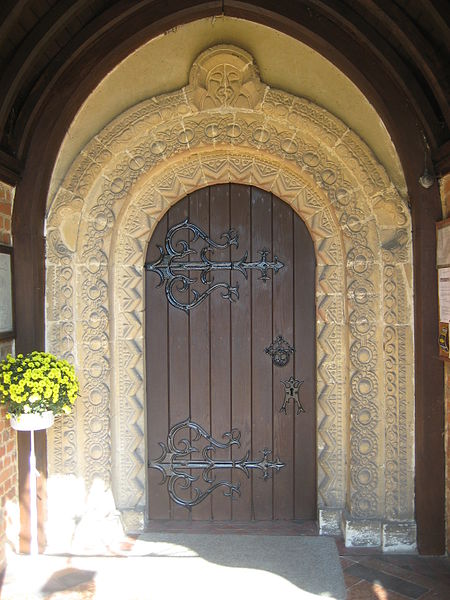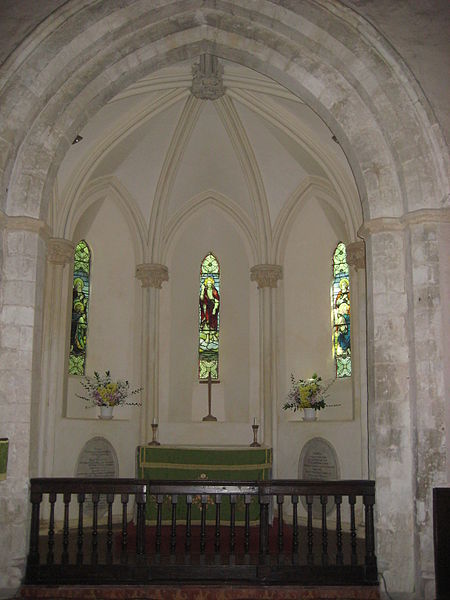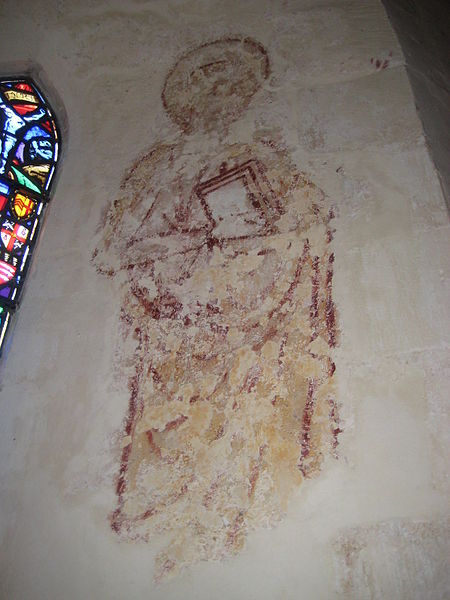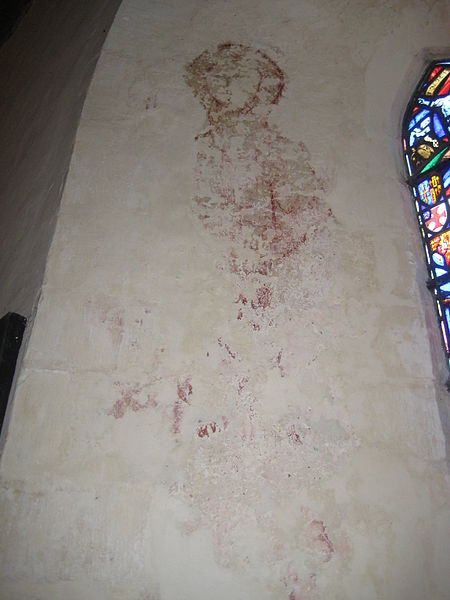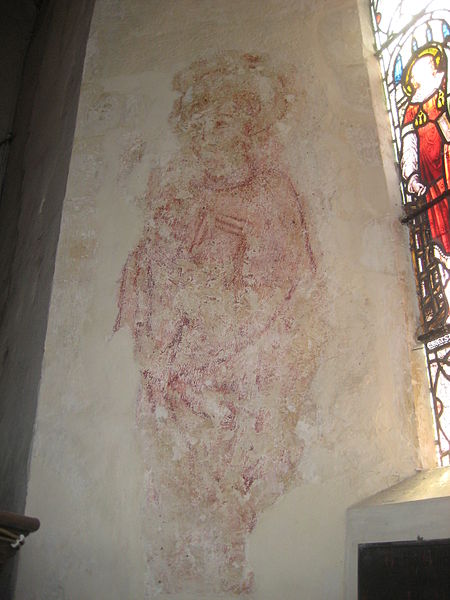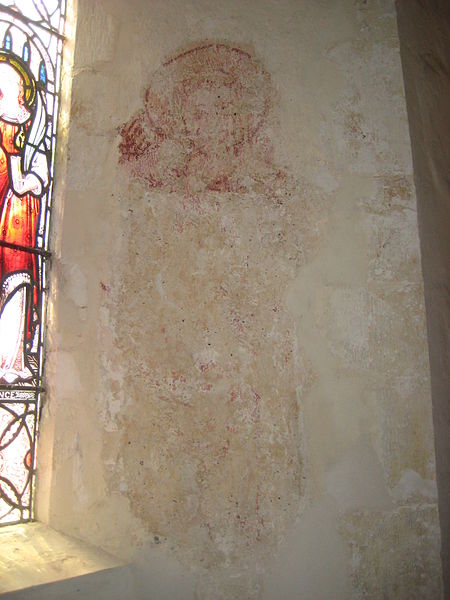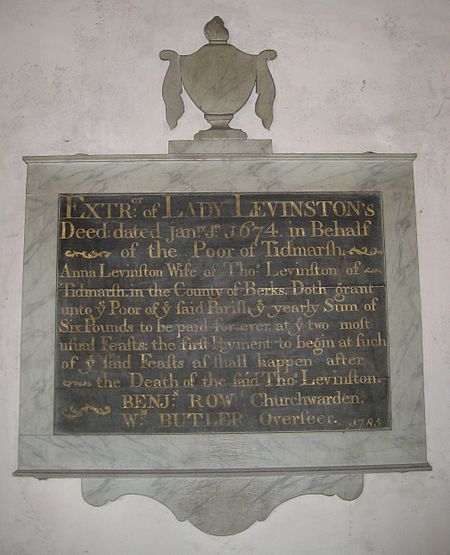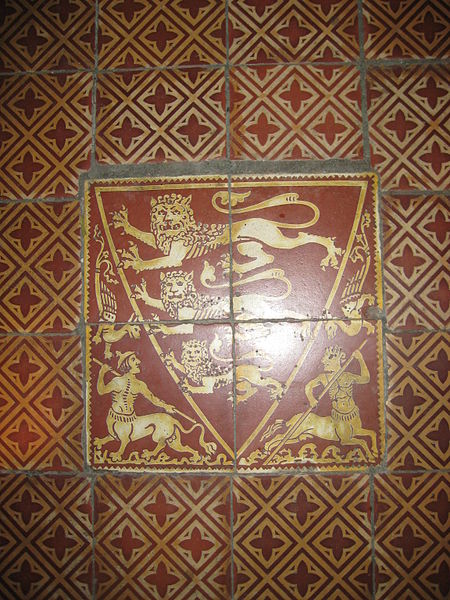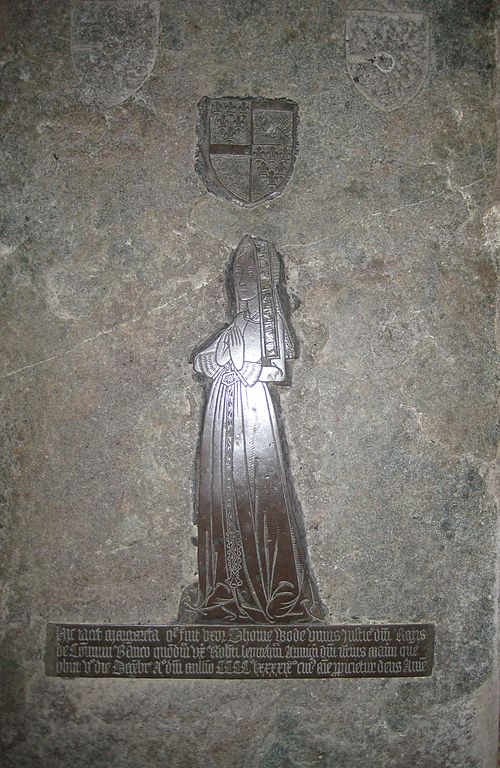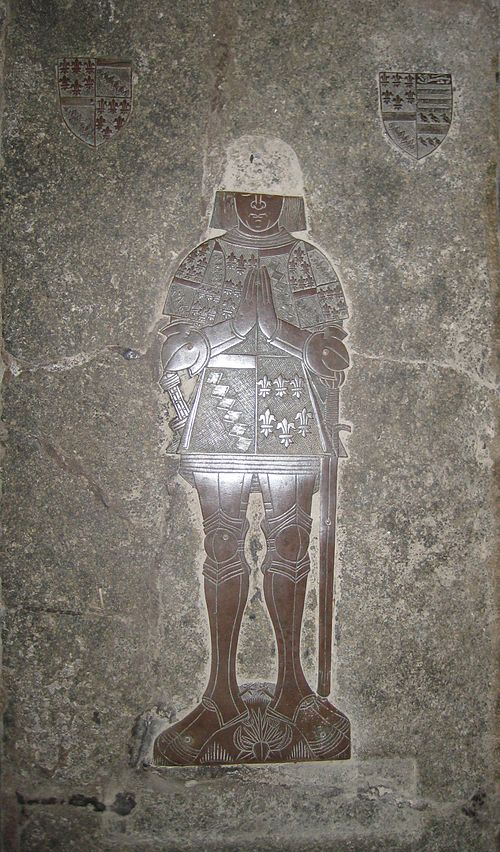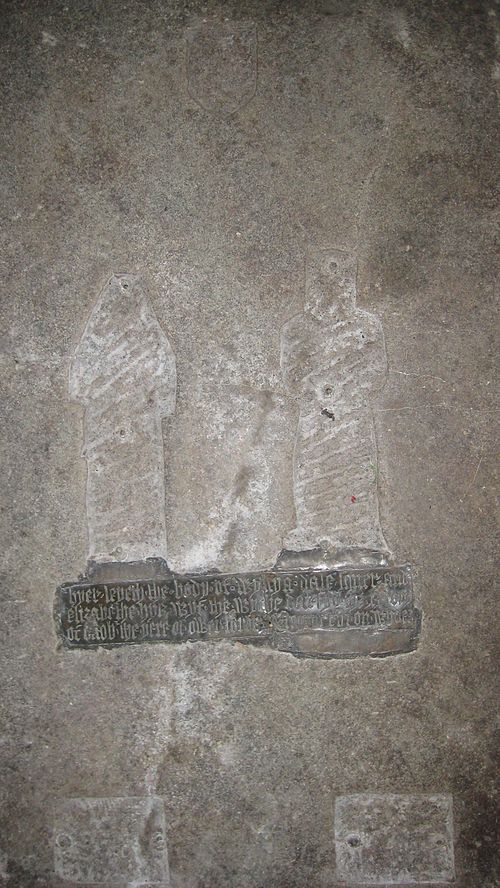Diary of a Rambling Antiquarian
Thursday, 5 September 2013
Tidmarsh
September is the month of Wiki Loves Monuments, an annual photography competition organised by the Wikimedia community, and this year is the first that Wikimedia UK has participated. The scope of this year's competition, with respect to England, Scotland, Wales and Northern Ireland, is restricted to Grade I and Grade II* listed buildings, and disappointingly the photos I took on Monday and Tuesday of Wilder's Folly and St Nicholas' Church in Sulham do not count as they are merely Grade II buildings (even though to my mind a Grade II folly seems so much more photogenic than a Grade II* farmhouse). Although I don't have any pretensions of being a contending photographer, it would be good to support the competition and help improve Wikimedia Commons, so today at lunchtime I go (by car I am ashamed to admit) to Tidmarsh, the adjacent parish to Sulham (with which it has shared a single priest since 1943).
At first look, the little parish church of St Laurence, with its stubby wooden bell tower, does not have the appearance of a Norman church, and I wonder if this really is the Grade I listed building that I am looking for.
St Laurence's Church, Tidmarsh
However, when I go round to the east end of the church I am greeted by a polygonal apse that English Heritage tells me is a very rare 13th-century example, dating to circa 1220 when the east end of the church was rebuilt.
13th-century polygonal apse of St Laurence's Church
Having completed my tour of the church's exterior, I open the gate of the south porch and find myself facing a wonderful, elaborately-carved stone doorway that dates to the late 12th century. At the apex of the doorway is a bearded head, probably representing Jesus, but it does not fit in with the surrounding stones and is thought to be a 13th-century addition.
12th-century doorway of St Laurence's Church
[This picture is featured in a WMUK blog post by Richard Nevell]
Inside, the church is very pleasing in appearance, with a simple chancel filling the space of the 13th-century apse.
Chancel of St Laurence's Church
On each reveal of the eastmost lancet windows of the nave are the remains of faded medieval frescos depicting saints or apostles, the one bearing a book and a knife thought to be St Bartholemew. These and many other fragmentary wall paintings, probably dating to the middle of the 13th century, were uncovered when the church was restored in 1834, but most were in poor condition and so were plastered over again, and only these two pairs of figures remain uncovered. They have been recently restored to remove earlier waxing and outlining.
Medieval wall painting (right reveal of north window)
Medieval wall painting (left reveal of north window)
Medieval wall painting (right reveal of south window)
Medieval wall painting (left reveal of south window)
I am running out of time, and the only other pictures I take are of a wooden plaque on the north wall commemorating a charitable bequest, reminiscent of the plaques on nearby St Mark's Englefield, and a quick snap of one of the beautiful floor tiles that cover the nave. In the evening, when I am browsing through the church guide booklet I find that there are a couple of late 15th and early 16th century brasses in the church which I overlooked, so I will have to come back another day to see them.
Wooden Plaque on the north wall of St Laurence's Church
Extrct of Lady Levinston's
Deed: dated Janry 1ſt 1674. in Behalf
of the Poor of Tidmarſh.
Anna Levinſton Wife of Thos Levinſton of
Tidmarſh, in the County of Berks, Doth grant
unto ye Poor of ye ſaid Pariſh ye yearly Sum of
Six Pounds to be paid for ever, at ye two moſt
uſual Feaſts: the firſt Payment to begin at ſuch
of ye ſaid Feaſts aſ ſhall happen after
the Death of the ſaid Thos Levinſton.
BENJn ROW Churchwarden.
Wm BUTLER Overſeer. 1785
Floor tile
Monday, 9 September 2013
Back Again
A few days later I did come back and take many more pictures of the interior of St Laurence's Church. All the pictures I took documenting St Laurence's Church are available on Wikimedia Commons, so I have only added below pictures of the replica medieval tiles that floor the entire nave and the 16th century monumental brasses mentioned above. Not having my brass-rubbing kit to hand, and the church being too dim for natural light photography, I had to use the flash with the expected unfortunate glare on both the brasses and the tiles. Despite this, I am quite pleased with the results.
Brass of Margaret Wode (d. 1499)
Margaret Wode (died 5 December 1499) was the wife of Thomas Wode (a justice of Common Pleas),
and previously wife of Robert Lenham (d. 1491), lord of the Manor of Tidmarsh.
Brass of a knight in 16th-century style armour
The inscription beneath the knight and the top of his head were lost centuries ago,
so the exact identity of the knight is unknown, but 19th century prints of the brass
show him surrounded by four shields, of which only two now remain.
The six fleurs de lis on his Tabard, and quartered on the shields, are the coat of arms
of the Lenham family, lords of the manor of Tidmarsh until 1522 when Margaret Warren
(daughter of Henry Lenham, granddaughter of Robert and Margaret Lenham)
sold the manor to Thomas Englefield.
Brass of William Dale (d. 1536) and Elizabeth Dale (d. 1533)
This brass for Elizabeth Dale (died 21 October 1533)
and William Dale (his will dated 20 November 1536 is held at the National Archive)
is now missing the figures of the marrried couple above the inscription,
and the figures of their kneeling children below the inscription.
Victorian replicas of 13th century tiles in Westminster Abbey
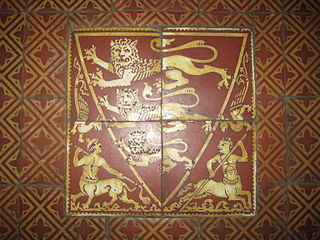 Royal Coat of Arms of Henry III |
|
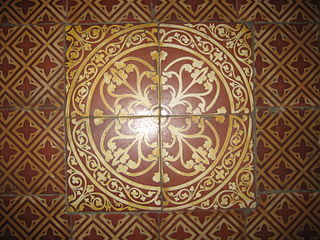 |
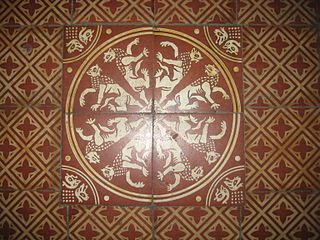 |
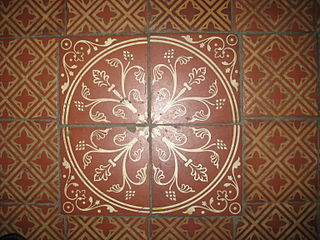 |
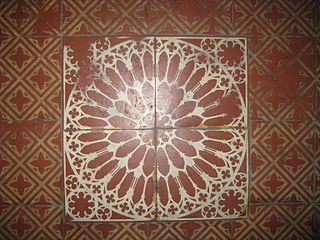 |
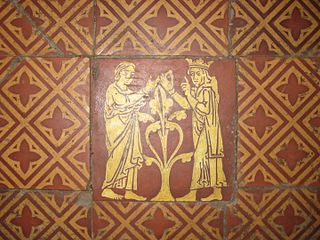 King Edward the Confessor giving a ring to a pilgrim |
|
Berkshire | Churches | Medieval wall paintings
Index of Rambling Antiquarian Blog Posts
Rambling Antiquarian on Google Maps
